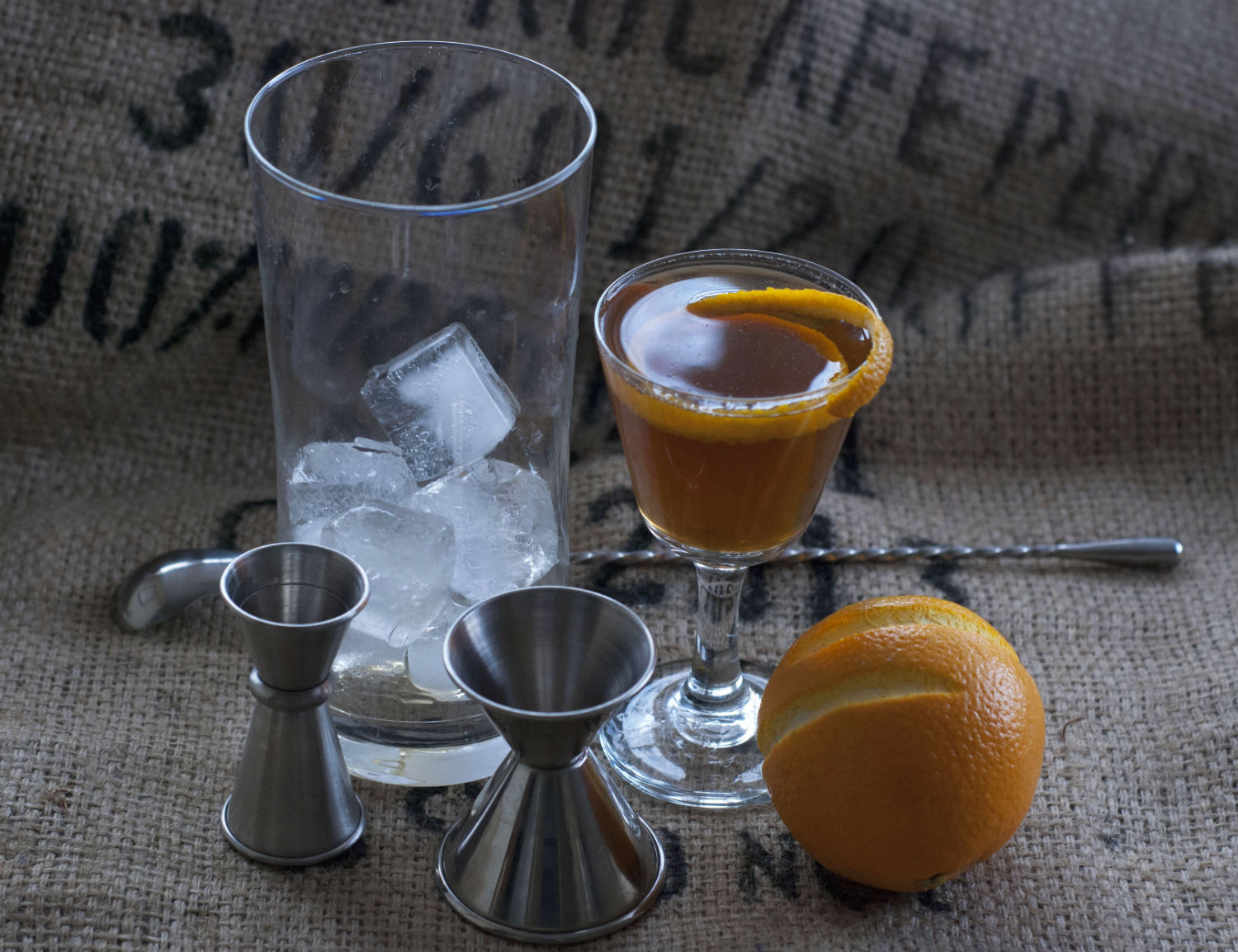 After researching a lot of cocktails with contentious origins, it comes as no surprise that the ever-popular Manhattan has many origin legends. The drink was definitely a bar staple by the 1860s, but the details of where and when it was created are largely lost to history. One of the most interesting stories was that it was invented for a party thrown by Winston Churchill's mother at the Manhattan Club. Unfortunately, the historical record indicates that she was across the pond giving birth during the time of this party.
Other sources give credit to a bartender named Black who worked in another bar in Manhattan. If this was the case, it's likely that this libation was created to be one of the five cocktails named for New York City's five main boroughs. Despite its lack of historical figures, this tale is likely the most true.
After researching a lot of cocktails with contentious origins, it comes as no surprise that the ever-popular Manhattan has many origin legends. The drink was definitely a bar staple by the 1860s, but the details of where and when it was created are largely lost to history. One of the most interesting stories was that it was invented for a party thrown by Winston Churchill's mother at the Manhattan Club. Unfortunately, the historical record indicates that she was across the pond giving birth during the time of this party.
Other sources give credit to a bartender named Black who worked in another bar in Manhattan. If this was the case, it's likely that this libation was created to be one of the five cocktails named for New York City's five main boroughs. Despite its lack of historical figures, this tale is likely the most true.
Interestingly, putting together an original Manhattan is almost as impossible as piecing together its backstory. The oldest recorded recipe calls for a few dashes of Boker's bitters in equal parts rye whiskey and sweet vermouth. A few decades ago, the original Boker's bitters went out of production, so unless you're willing to shell out some serious cash for a vintage bottle, you're unlikely to ever taste the most historic Manhattan.
As well, modern palates (and bartenders) favor spirit-heavy drinks over vermouth-heavy drinks. As a result, the most popular recipe for a Manhattan calls for a 2:1 ratio of whiskey to vermouth. Thanks to a few marketing campaigns featuring the Manhattan, bourbon has largely eclipsed rye in common recipes. Though this substitution doesn't affect the presentation, it gives the drink a much smoother, sweeter taste overall than a rye Manhattan.
 The rye Manhattan is a dark, slightly sweet cocktail with a hint of spice from the whiskey. An orange peel garnish adds a citrusy nose that compliments the wine and dark fruit of the first sip. Garnishing with a maraschino cherry, by contrast, adds a very sweet finish to a sweet, but balanced drink. Though the origins of this practice are unclear, written records would seem to indicate that the orange peel garnish came first.
The rye Manhattan is a dark, slightly sweet cocktail with a hint of spice from the whiskey. An orange peel garnish adds a citrusy nose that compliments the wine and dark fruit of the first sip. Garnishing with a maraschino cherry, by contrast, adds a very sweet finish to a sweet, but balanced drink. Though the origins of this practice are unclear, written records would seem to indicate that the orange peel garnish came first.
Choosing complimentary vermouths and whiskeys is one of the biggest parts of making a delicious Manhattan. For example, a more bitter vermouth like Punt e Mes won't necessarily compliment either the boldness of Rittenhouse rye or a smooth bourbon. However, a more rounded, earthier vermouth like Cocchi Vermouth di Turino or Carpano Antica Formula can bring out the best qualities in either liquor.
Since no two people have the exact same taste preferences, experimentation is the best way to find our your favorite drink recipes. Try out different combinations and see what works for you.
Recipe: 3 dashes Angostura bitters 1 dash Heering cherry liqueur 1 oz sweet vermouth 2 oz rye whiskey
Combine all ingredients in a mixing glass. Add ice and stir until well incorporated. Strain into a chilled cocktail glass and garnish with an orange peel or maraschino cherry depending on your preference.
